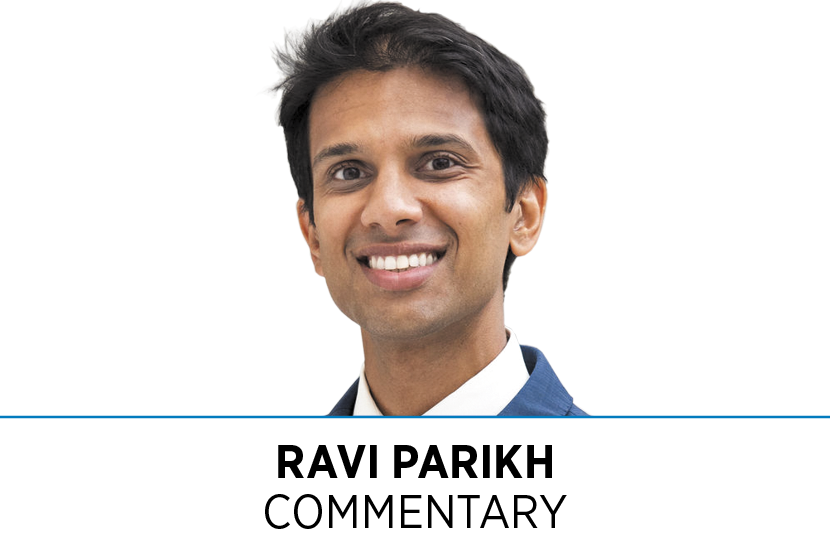Subscriber Benefit
As a subscriber you can listen to articles at work, in the car, or while you work out. Subscribe Now I’m an academic doctor. But for-profit research may be the way of the future.
I’m an academic doctor. But for-profit research may be the way of the future.
As a cancer doctor and researcher working in academia, I’ve been taught to distrust any studies associated with for-profit companies. But the landscape of research is changing—and for-profit research may be the best way to help patients in the future.
Recently, a research colleague conducted a study that found the Affordable Care Act reduced racial disparities for patients with cancer. One of the largest medical conferences in the country asked her to discuss her study in front of thousands of doctors.
But later, she was asked to withdraw from discussing her work and have an academic professor present in her place. The reason: She was employed by a for-profit company and the work could appear biased. But her methodology was impeccable. And, although her company supported the study and provided her with data, it had no direct financial stake in the outcome.
It’s easy to understand why people distrust for-profit research. For-profit industries like the pharmaceutical industry have spent decades trying to influence studies to get more of their products onto the market. Decades of corporate influence in medical research have led to a growth of conflict of interest policies, forcing researchers to disclose any ties with for-profit industries. Some have argued to go a step further—to eliminate the involvement of for-profit industries in academic research.
Even though academic journals and meetings don’t strictly ban for-profit research, the majority of studies are led by academic physicians. As a result, most patients who want to participate to test a drug or device need to go to an academic center that may be hours from home.
There are several trends that make elimination of the for-profit industry in research impossible—and maybe even dangerous.
First, government research allocations—which used to be the predominant form of funding—are becoming more limited. In the 1960s and 1970s, the government funded more than 70% of all basic science research. That federal share dropped below 50% for the first time in 2015. And, if President Donald Trump’s budget proposals ever becomes a reality, organizations such as the National Science Foundation could face a 12% cut in their allocations.
Second, patient data is increasingly in the hands of for-profit industries. Insurance firms and other for-profit companies have been collecting patient data that yields important information that could be used to shape medical care and health policy.
As an example, in cancer medicine, companies such as Flatiron Health and Foundation Medicine have collected de-identified repositories of patient health and genetic information. A recent paper led by Flatiron and Foundation, published in the Journal of the American Medical Association, highlighted how such “real-world” data could help improve the design of clinical trials so that more patients—namely, underrepresented minorities—are included.
Google and other for-profit companies have similarly published high-profile medical research in recent years.
But this is the exception, rather than the norm. Because for-profit researchers may face heavy bias from academic journal editors and reviewers, companies more commonly provide data to academic organizations, and then academic physicians lead and publish the study. As a result of this complicated process, we are probably only scratching the surface of what can be learned from this data.
Coincidentally, people are increasingly willing to share their data with for-profit companies for research.
In a 2018 Deloitte survey, 46% of patients reported being willing to share their personal data (including data from their health records and smartphones) with their health plan or with a hospital affiliated with a university, and 31% were willing to share data with device manufacturers or pharmaceutical companies. As people become more comfortable sharing data with private companies, these percentages may increase.
Finally, many talented people are increasingly working in the for-profit sector to advance science. Much of the advances in artificial intelligence, for example, have come from tech companies such as Google. These technologies hold the potential to improve the accuracy of interpreting radiology images or pathology data. Physicians and policymakers should be encouraging companies to present their work if it can benefit patients—rather than bar them from medical conferences and academic journals.
Important research will increasingly be conducted, funded or facilitated by for-profit companies. Admittedly, researchers and patients will need to be on guard: Patient informed consent will be more important than ever. And for-profit companies will need to follow appropriate research practices—including publishing negative results that may hurt their bottom-line and releasing analysis plans well in advance of publishing their research results—that are equally or more strict than most academic researchers follow.
Finally, these for-profit companies may need to make their data public so that independent bodies can confirm that their findings are accurate.
With these safeguards in place, patients and academics should be open to interactions with the for-profit industry to advance research. Otherwise, industries are unlikely to be motivated to use their data and expertise to improve public health.•
__________
Parikh is an oncologist at the University of Pennsylvania and the Philadelphia VA Medical Center. He wrote this column for The Washington Post.
Please enable JavaScript to view this content.
